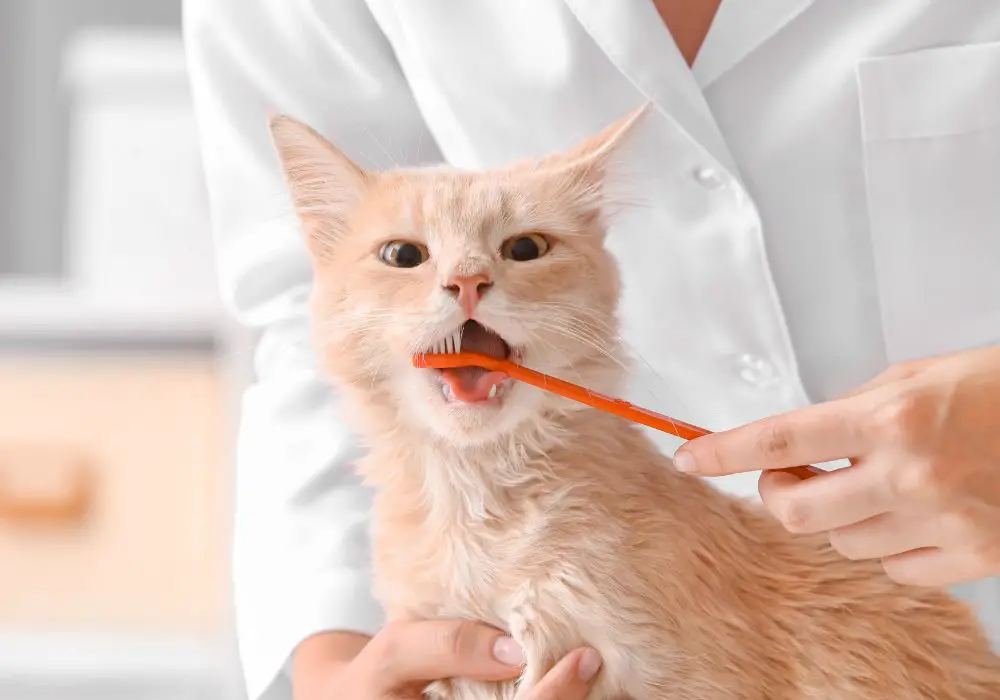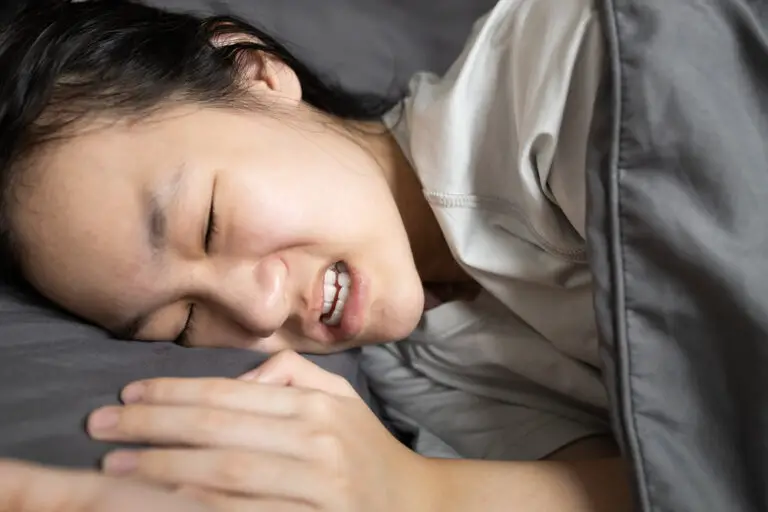As a cat owner, you want to provide the best possible care for your feline companion. Proper dental hygiene is an important part of caring for a cat’s health. You may wonder if it’s safe and effective to use regular human toothpaste when brushing your cat’s teeth. However, human toothpaste contains ingredients that can be harmful if ingested by cats. This in-depth article explores the risks of using human toothpaste on cats, safer feline toothpaste options, proper brushing techniques, and the importance of professional veterinary dental cleanings.
Dangers of Human Toothpaste Ingredients for Cats

Human toothpaste contains several ingredients that are meant to clean and protect human teeth, but can cause adverse reactions in cats:
1. Toxic Fluoride
- Fluoride is commonly added to human toothpaste formulas to strengthen enamel and prevent cavities from forming.
- However, cats do not need fluoride since their teeth have a different anatomical structure than human teeth. Cat teeth consist of mostly dental tissue rather than hard enamel.
- Fluoride is toxic when ingested by cats, even in small amounts. Cats who swallow fluoride may experience acute stomach upset, vomiting, and diarrhea.
- In larger doses, absorbed fluoride causes salivation, neurological tremors, and even seizures from fluoride toxicity. Neurological symptoms can persist even after treatment due to permanent damage to the nervous system.
- All human toothpaste should be assumed to contain fluoride unless labeled as fluoride-free.
2. Irritating Detergents
- Human toothpaste relies on detergents like sodium lauryl sulfate to generate the foaming action.
- The detergents permeate and dissolve debris, making mechanical brushing more effective.
- However, cats find the strong foaming sensation frightening and unfamiliar. It may trigger their gag reflex, causing them to vomit.
- Detergents will cause stomach irritation or upset if swallowed by cats during brushing.
3. Deadly Xylitol
- Some brands of human toothpaste contain xylitol, an artificial sweetener added to enhance flavor.
- Xylitol is extremely toxic to cats, even in very small ingestions. Xylitol triggers a powerful release of insulin in cats’ bodies.
- This rapid insulin spike causes a corresponding dangerous drop in blood sugar. Lethally low blood sugar leads to depression, collapse, seizures, and liver failure.
- Any exposure to xylitol can be fatal for cats, with a high mortality rate. Prevention is key.
- Always verify the toothpaste contains no xylitol before use. This sweetener is sometimes added to children’s or “natural” toothpaste brands. Don’t take risks.
4. Damaging Abrasives
- Human toothpaste relies on abrasive ingredients like silica to mechanically scrub stains and plaque off teeth.
- In humans, this abrasive action helps polish and clean hard dental enamel.
- However, cats have very little enamel on their teeth. Their tooth structure consists largely of cementum, dentin, and dental pulp tissue.
- The abrasives in human toothpaste will damage these softer tooth tissues. This can erode the tooth surface and lead to sensitivity or dental pulp exposure.
- Abrasives may also scratch the gum tissue, allowing bacteria to infect the damaged sites.
While a single use of human toothpaste may not poison a cat, repeated exposure to these ingredients poses many risks. Even small amounts ingested over time can cause toxicity. It’s safest to use a toothpaste specially designed for feline mouths.
Benefits of Cat-Formulated Toothpaste

Veterinarian-approved cat toothpaste avoids the potentially toxic ingredients found in human pastes. Cat toothpaste provides these benefits:
- No fluoride – no risk of toxic overexposure for your cat.
- Non-foaming enzymes or proteins – more comfortable for cats to tolerate.
- Cat-friendly flavors like poultry, fish, or malt make it more palatable.
- Gentle abrasives specifically designed for cats’ teeth – less likely to damage soft tissue.
- Tartar and plaque control ingredients – reduces buildup to prevent periodontal disease.
- Free of xylitol and detergents – prevents toxicity if small amounts are ingested.
- pH neutral – avoids damage to tooth enamel.
- Veterinary seal of approval provides peace of mind that it’s safe for regular use.
Cat toothpaste gives your cat all the oral health benefits without jeopardizing their safety. It’s the ideal choice for home dental care.
Top Cat Toothpaste Brands
Here are some top veterinarian-recommended cat toothpaste brands to consider:
Veterinary Brands
- Virbac C.E.T. Enzymatic Toothpaste – Popular poultry flavor. Contains dual-enzyme system to break down plaque.
- Purina Dentalife – Poultry flavor. Has delmopinol to control plaque and tartar formation. Fluoride-free.
- Petrodex Enzymatic Toothpaste – Formulated with alpha-amylase and glucoamylase enzymes. With poultry flavor. Prevents periodontal disease.
Pet Store Brands
- Tropiclean Fresh Breath – Foaming gel with poultry flavor. Freshens breath.
- Arm & Hammer Feline Toothpaste – Uses baking soda to control tartar. Added enzymes. Poultry flavored.
- Nylabone Advanced Oral Care – Chicken flavor. Dual-enzyme formula reduces plaque and tartar.
Look for a reputable brand your cat likes the flavor of. Monitor your cat closely while brushing to ensure they don’t ingest large amounts.
Step-By-Step Brushing Instructions

Once you’ve chosen the right cat toothpaste, follow these steps for safe and effective brushing:
1. Choose the Right Brush
- Use a toothbrush specially designed for a cat’s mouth, not a human brush.
- Look for a brush with extra-soft bristles to avoid irritating cats’ gums.
- Choose a small brush head that can access all surfaces of teeth and gums comfortably.
- Finger toothbrushes may be easier to control than a full-size handle.
2. Set the Scene
- Start slowly with brief, positive sessions to get your cat used to brushing.
- Have your cat in a comfortable, familiar position like your lap or a table.
- Stay calm and patient. Cats pick up on your mood.
- Offer treats and praise to make it a rewarding experience.
3. Brush With Care
- Apply a pea-sized amount of cat toothpaste to the brush.
- Gently brush the outer surfaces of the teeth at a 45-degree angle. Don’t forcefully scrub.
- Work cautiously at first, gradually covering more tooth surfaces as your cat accepts it.
- Never brush too far back as this may trigger the gag reflex.
- Avoid having your cat swallow toothpaste to prevent stomach upset.
4. Maintain a Routine
- Brushing daily is ideal, but 2-3 times per week can still be beneficial.
- Gradually work up to brushing for 1-2 minutes per session.
- Incorporate brushing as part of your cat’s regular care routine.
- Seek advice from your vet if your cat won’t tolerate brushing. Don’t over-stress your cat.
Regular brushing with the proper technique and toothpaste prevents dental disease while avoiding safety hazards.
Importance of Professional Veterinary Dental Cleanings

While home brushing is helpful, your cat still requires regular professional dental cleanings by your veterinarian. Here’s why professional dental care is so important:
- The vet can scale off tartar above and below the gumline, which brushing can’t reach.
- Polishing and cleaning all tooth surfaces, not just exterior portions.
- Providing dental X-rays to check for problems invisible to the eye.
- Performing an oral exam to detect signs of feline tooth resorption, gaps, inflammation, and other issues.
- Treating any existing dental disease, like abscesses, cavities, or broken/damaged teeth.
- Removing debris from hard-to-reach places like around braces, under the gums, or between teeth.
Kitten Dental Schedule
Kittens should have their first professional dental cleaning around 6-12 months of age since dental disease can develop quickly.
Adult Dental Schedule
For adult cats, professional dental cleanings are recommended every 6-12 months depending on your cat’s dental health. Your vet will advise you on your cat’s ideal dental cleaning frequency.
Don’t assume brushing at home is enough. Work with your vet to ensure your cat’s teeth stay healthy inside and out.
Warning Signs Requiring Veterinary Dental Care

See your vet right away if you notice any of these signs of feline dental disease:
- Bad breath or unusual mouth odor
- Red, swollen, or bleeding gums
- Excessive drooling or pawing at the mouth
- Loss of appetite or difficulty eating
- Obvious tartar buildup on teeth
- Loose or broken teeth
- Swelling of the face, jaws, or mouth
- Abscesses in the mouth
- Tooth loss or teeth fracture with pulp exposure
These symptoms indicate advanced dental disease. Prompt veterinary treatment is crucial to ease pain, extract damaged teeth, fight infection, and prevent the problems from worsening. Don’t delay dental care if your cat exhibits these troubling signs.
Conclusion
While it may seem quick and easy to use human toothpaste on your cat’s teeth, human toothpaste contains several ingredients that can be toxic, dangerous, or even deadly for cats. Special veterinarian-approved cat toothpaste avoids these hazards. Brushing with cat toothpaste, using proper technique, and getting regular professional cleanings will help your cat maintain healthy teeth and gums throughout their lifetime. Monitor your cat closely while brushing and watch for any signs of dental problems. With the right toothpaste and care regimen, your feline companion can enjoy better oral health and experience less dental disease as they age.
Feline Dental Care FAQ
Is baking soda a safe alternative to cat toothpaste?
No. Baking soda is too abrasive for cats’ teeth. Use a toothpaste formulated specifically for cats.
Can I switch between human and cat toothpaste?
Absolutely not. Never use human toothpaste on cats due to the hazardous ingredients. Only use toothpaste made for cats.
How often should I brush my cat’s teeth at home?
Veterinarians recommend brushing your cat’s teeth daily or every other day for the best oral health benefits. Even brushing 2-3 times per week offers advantages over not brushing at all.
Do cats still need dental cleanings if I brush their teeth?
Yes. Professional cleanings are still essential even if you brush your cat’s teeth regularly. Dental cleanings allow deep cleaning below the gumline that brushing can’t reach.
What chemicals in human toothpaste are toxic to cats?
Fluoride, xylitol, and detergents found in human toothpaste can cause toxicity when ingested by cats during brushing. Always use cat toothpaste instead.







